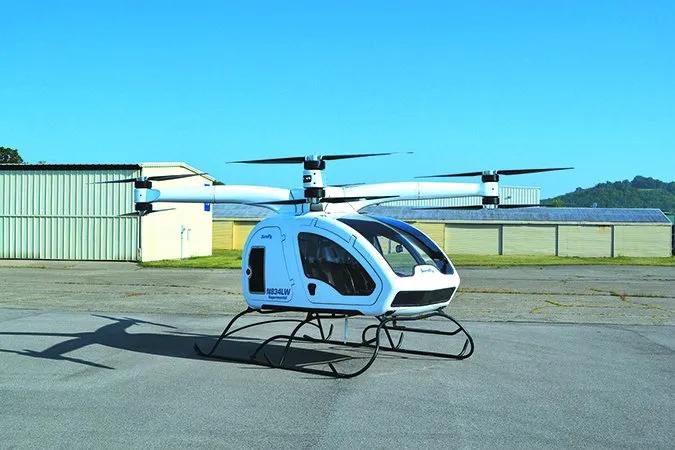Weather On Your Thumb
I enjoyed reading the latest (Oct.) IFR. I thought “Weather Rules of Thumb” by Tim Vasquez was particularly good.
Another good rule of thumb is Buys Bullot’s law: To locate where the bad weather is coming from, put your back to the wind and extend your left arm straight out. That’s where the low pressure bad WX is coming from. It works for me.
Rich Lytle
Naples, FL

Denver Center?
I’m the founder of PilotEdge and I know Jeff Van West rather well. I was alerted by one of your readers about an omission in the “Alpha Dog” Sim Challenge article (November 2018) where Jeff lists the ARTCC’s in which we provide ATC service. Unfortunately, the Denver ARTCC (home to Eagle, Aspen, Denver, Colorado Springs, etc.) was missing from the list.
I’m hoping you can correct that oversight.
Keith Smith
PilotEdge
You just did, Keith.
As much as we like to chide Jeff for his occasional factual slip, he’s innocent on this one. We wrote and added that sidebar and overlooked Denver Center.
Thanks for letting us know.
Viable Electric Aircraft?
I just wanted to respond to Frank Bowlin’s comments in the September issue regarding electric airplanes. While I agree with his comments as far as they go, I think he’s missing two key points.
First is the old (overused) Wayne Gretzky aphorism about looking where the puck is going, not where it is. Battery technology is rapidly improving and getting cheaper and more energy dense; also improving are energy management software, charging infrastructure (including fast charging), strong lightweight materials, high-efficiency lightweight electric motors, and so forth. We may not have a practical electric replacement for the 172 today, and probably still won’t in 5 years. But 10? 20? I wouldn’t bet against it.
And the second point is that he’s defining the “electric airplane” too narrowly, basically a straight substitute for today’s small aircraft.
But remember that the original PC was often dismissed as a home toy because it couldn’t do things that “real computers” did, and yet it enabled new applications and grew by working where the “real computers” couldn’t.
Electric propulsion is likely to introduce similar sorts of changes in aviation. Indeed, the most dramatic change in aviation over the past 10 years is almost certainly the advent of drones, and these are powered not by avgas or Jet-A, but by electrons. I would not be at all surprised to see additional new applications for electrically-powered short-haul (i.e., range isn’t a dominant factor) lightweight aircraft—both manned and unmanned—that haven’t been developed before now because the weight/complexity/failure modes of internal combustion aircraft simply don’t work.
Eric Berman
Woodinville, WA
Thanks for your thoughts, Eric.
On your first point about battery technology improving in an unknown future, I’ll readily admit that anything is possible. I’m reminded of the shift in electronics from vacuum tubes to transistors and ultimately integrated circuits. With battery technology, in that analogy, we’re leaving vacuum tubes behind and probably approaching the transistor stage. Unfortunately, there’s little suggestion that it’s even possible to hit the integrated circuit stage where we’d get orders of magnitude more charge density. Sure, it could happen, and I hope it does. But, as I said, I’m not holding my breath.
As for how I was looking at “electric airplane” I’ll concede that point. Just as electric cars with under 100-mile range are today viable, so, too, might limited-use, limited-range all-electric aircraft become viable. Indeed, we’re already seeing some of that with creative up-scaling of drones to specialized uses not previously explored by traditional aircraft.
That said, I was deliberately referring to aircraft of the type we enjoy today and what appears to be the lack of practical application of electric propulsion. —FB
Mode for Climb? Descent?
I enjoyed and appreciated your articles regarding the operation and use of autopilots. In “Advanced Autopilot Use” in the October 2018 issue, you focused on altitude pre-select strategies and functional tactics in utilizing an autopilot for approach, attempted landing, and on the missed approach. You added an interesting suggestion to load a “safety precaution” altitude of 10,000 feet into the altitude preselect. Should work well over Kansas. I understand your recommendations and think they can help us all.
What I thought missing was any mention of how to best deal with altitude changes as necessary. Obviously the many different types and models of autopilots make it difficult, or most likely impossible, to summarize autopilot vertical ascend/descend control inputs and appropriate monitoring of the desired outcome. I realize that many of your readers do not have autopilots that can maintain an indicated airspeed.
I’ve found that the easiest way to fly an approach on autopilot so enabled is to get the plane established in approach mode, on speed, and engage the autopilot in IAS hold mode. For most of my flights it will be near 140 KTS for Class D (can be 170 KTS for Class B). Want to go down? Decrease power. Want to go up? Increase power. The autopilot will pitch to remain at 140 KTS (or the selected IAS) throughout. The altitude preselect functions remain operative. Get to your pre-selected altitude of 1500 feet at 140 knots the altitude selector will level the aircraft. Will it slow? Yes, as expected. The altitude preselect took over from the IAS. Reset power as appropriate.
Maybe in your article comparing the Garmin GFC 600 and the Genesys S-TEC 3100 you’ll address how each can be best utilized to manage ascents and descents.
Just thought it might be helpful for us all to get advice on all aspects of autopilot use.
Chuck Clark
Wellesley Hills, MA
That 10,000-foot cruise safety setting on altitude preselect in pressurized aircraft is a reasonable compromise. Yes, there is terrain above 10,000 feet in North America, but not much. If you happen to pass out due to hypoxia, the altitude to which you descend partially determines how fast you recover. If you select, say, 15,000 feet to clear anything in the contiguous U.S. you’re wasting a lot of altitude you could almost always use safely.
You make a valid observation that we could have further explored the modes available in new autopilots. So, we did just that in the final article that appeared last month. You might note that we also choose primarily to use IAS mode as our default mode for climbs and descents.
Bye Bye Back Course
As suggested in your September 2018 article, “Back to Back,” back course approaches can be confusing and are rife with ways a hapless pilot could inadvertently mess things up. Given the prevalence of GPS approaches today, why do we even have back course approaches?
Please note that according to AIC (Aeronautical Information Circular) 17/18 from Nav Canada dated July 19, 2018: “No more back course approaches will be available in Canada after 2018.”
Indeed, as I write this, there are only two back course approaches still available. One in Stephenville, NFL and one in Kelowna, BC.
Andr Durocher
Gatineau, QC, Canada
We read ’em all and try to answer most e-mail, but it can take a month or more. Please be sure to include your full name and location. Contact us at IFR@BelvoirPubs.com.




